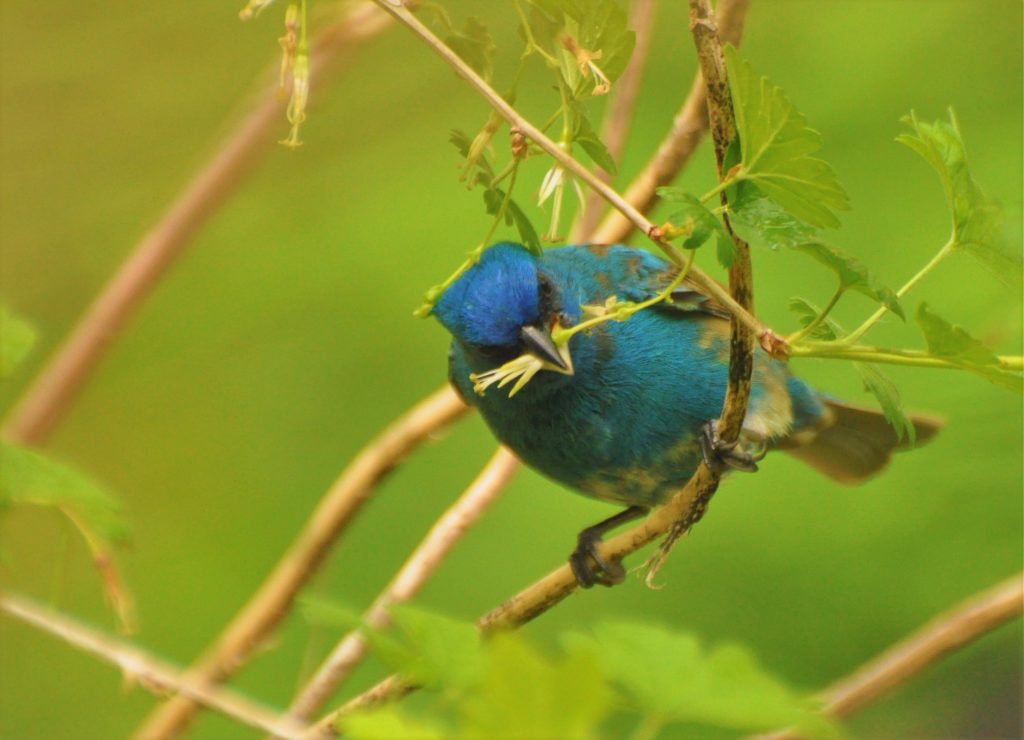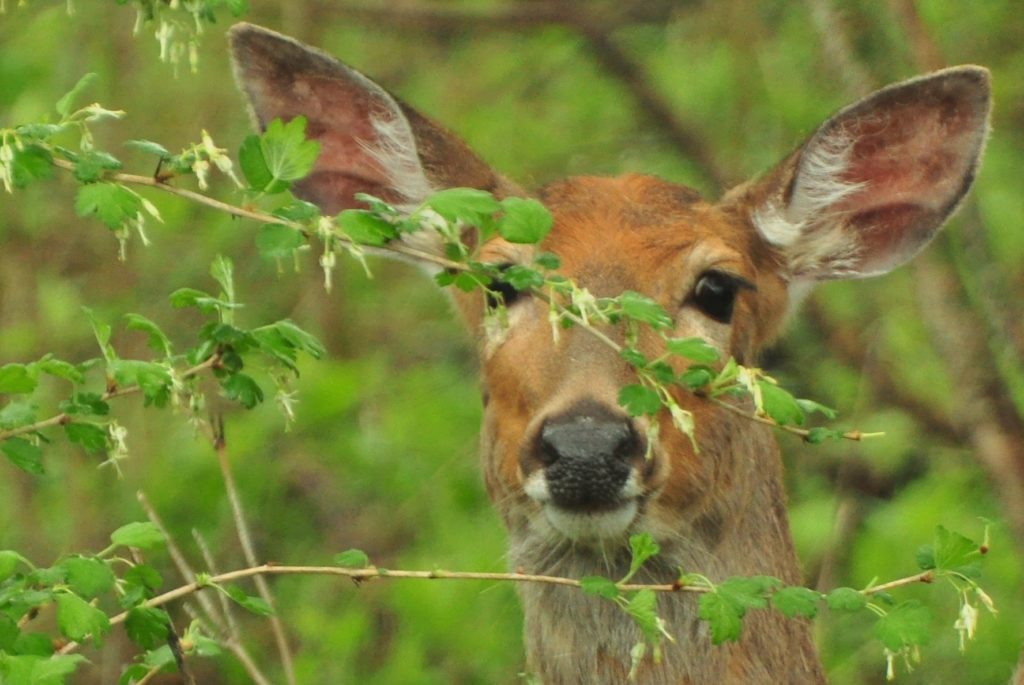Photography courtesy of Lowell Washburn, all rights reserved.
The wild gooseberry is one of my favorite woodland plants. Although its thorny exterior can make the gooseberry a prickly customer, the shrub does have some redeeming qualities. During spring, its thick greenery becomes a protein rich pantry for insect eating warblers while, at the same time, provides safe nesting for many other songbird species. In summer, the gooseberry’s tart fruit is relished by songbirds and humans alike. Birds take them as they are; humans are prone to convert the fruit into gooseberry pie.
Earlier this week, I was reminded of the fact that there is no need for birds or humans to wait until mid-summer to sample the gooseberry’s goodness. Although the forecast called for scattered showers, I decided to head out for one of my favorite birding areas anyway. Dominated by mature oak, the tract is densely interspersed with beautifully thick patches of gooseberry along with some renegade honeysuckle.
Snuggling into the thickest gooseberries, I had barely gotten seated when it began to sprinkle. Sprinkles soon became showers. Showers turned to steady rain. As you’d expect, most of the birds were doing the same thing I was doing – staying put and trying to stay dry. Fortunately, the rainfall was relatively short lived. Twenty minutes later, the precip began to back off and then ceased altogether.
As you’d expect, the forest quickly came alive with foraging birdlife. As I was observing a couple of insect guzzling redstarts, a male indigo bunting flew in and landed in the gooseberry located immediately to my left. But unlike the warblers, the indigo hadn’t come for insects. The gooseberry bush was currently in spring bloom and its lime green shrubbery was absolutely loaded with the species’ distinctive starburst, white flowers. It soon became apparent that the delicate flowers were what the bunting had on its mind. Hopping to where the flowers were thickest, the indigo soon began stripping the plant and downing the flowers with surprising rapidity. Five minutes later, the bunting was joined by a second male who lost no time in ripping off some flowers for himself. The nonstop consumption of flowers lasted for another ten minutes. Suddenly satisfied, the buntings turned their attentions to the task of preening their still wet, brilliant blue plumage.


I don’t know how many different wildlife species utilize the gooseberry’s tender white flowers. Bumblebees and hummingbirds are attracted to the plant’s sweet nectar and I’ve seen white-tailed deer consume the flowers with the same enthusiasm exhibited by those buntings. When curiosity got the best of me, I tried some for myself. Surprisingly sweet and delicate in texture; the flowers were amazingly tasty. As is the case when making a bowl of popcorn, one handful led to another.


But the best the gooseberry has to offer is yet to come. When sweltering mid-summer weather engulfs the Iowa landscape a couple months from now, a fresh slice of gooseberry pie topped with a big scoop of vanilla ice cream will really hit the spot.

 Tom Cope
Tom Cope Sue Wilkinson
Sue Wilkinson Susan Judkins Josten
Susan Judkins Josten Rudi Roeslein
Rudi Roeslein Elyssa McFarland
Elyssa McFarland Mark Langgin
Mark Langgin Adam Janke
Adam Janke Joe Henry
Joe Henry Kristin Ashenbrenner
Kristin Ashenbrenner Joe Wilkinson
Joe Wilkinson Dr. Tammy Mildenstein
Dr. Tammy Mildenstein Sean McMahon
Sean McMahon